A Virtual Exhibition at Rhombus Space
by D. Dominick Lombardi
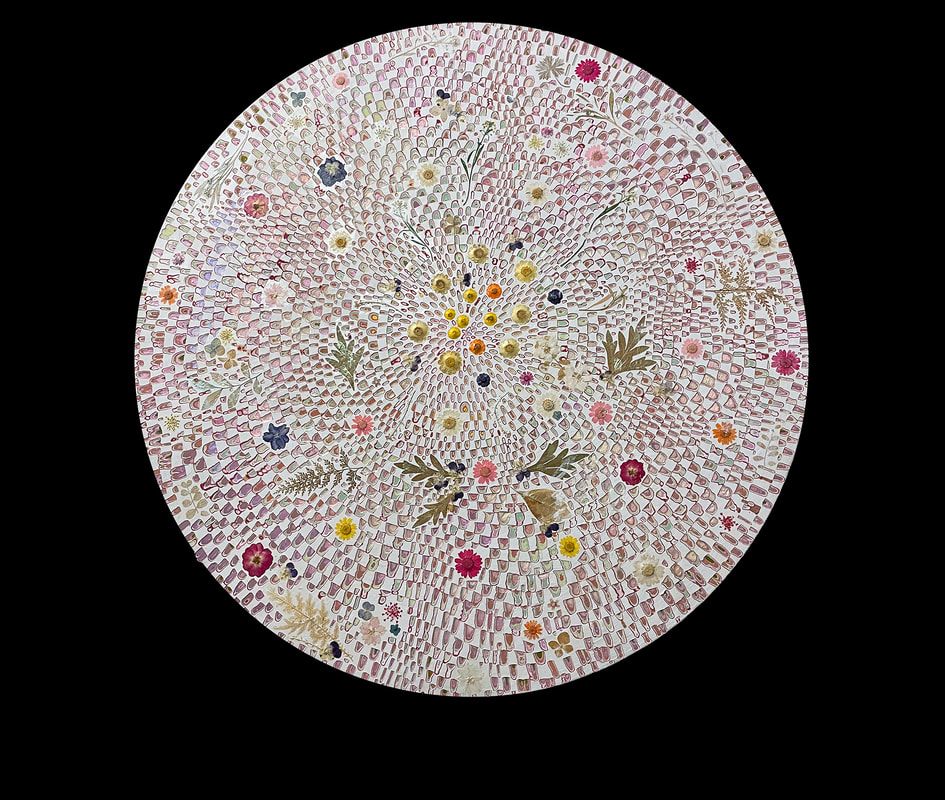
I have been asked a number of times to write a review of a virtual exhibition, and have never felt quite right about it. In the past, and certainly prior to COVID, I would cover an exhibition that I witnessed in person if it inspired thoughtful contemplation. I never saw that as a possibility in the virtual world, but I never closed the door entirely, as the pandemic seems to be as stubborn as the folks that are choosing to forgo getting vaccinated. So here we are – my first attempt.
Bounty, the current virtual exhibition featured at rhombusspace.com is designed to offer “the fall harvest, the fruits of earlier seeds planted” as it relates to the time spent in the studio these last 18 months. The exhibition wonders, what were artists thinking before and during COVID, what changed or didn’t change, and how did it affect an individual artist’s studio practice. There, I’ve already done something I rarely do, I read the first paragraph (after the artist’s names) of the press release before I started writing. I usually prefer to just go by what I see and not read the press release prior to my writing, unless I have had some sort of forewarning that I really need some background before I view the work.
Getting back to the exhibition – there are eight artists: Enrico Gomez, Rachael Gorchov, Adam Novak, Jean Rim, Corrie Slawson, Karla Wozniak, Holly Wong, and Etty Yaniv. Since I am only familiar with a few of these names, I will limit my commentary to the works in the exhibition, and not speculate on any changes due to COVID unless it is obvious in the work or titles.
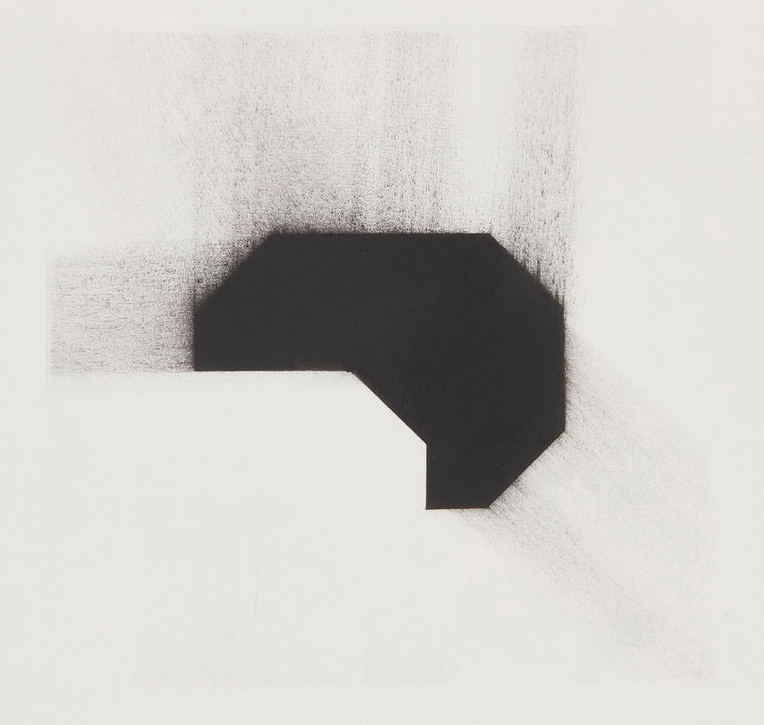
Enrico Gomez’s two drawings are from the Redux series. They feature somewhat complex geometric forms that bleed out, as if over-saturated in charcoal pigment and swept, or, are they sucking in errant medium like metal shavings to a magnet? You know, like those Wooly Willy toys with the little metal shavings behind the plastic barrier where you can guide with a little magnet, to add hair and a mustache to Willy’s hairless face. On the other hand, if you look at that directional dust as movement, it gives the work a feeling of weightlessness, while the areas left untouched adds more than a bit of finesse and control in these otherwise, curiously formed compositions. Rachael Gorchov’s two acrylic paintings on panel are comprised of multiple layers of thinly applied washes and bold brush strokes. Again, like Gomez, movement comes to the fore, while here, we see somewhat obscured faces in both, resulting in a sort of crossing out of any representation with forceful non-representational brushes of abstraction. Perhaps this is the change the press release is referring to?
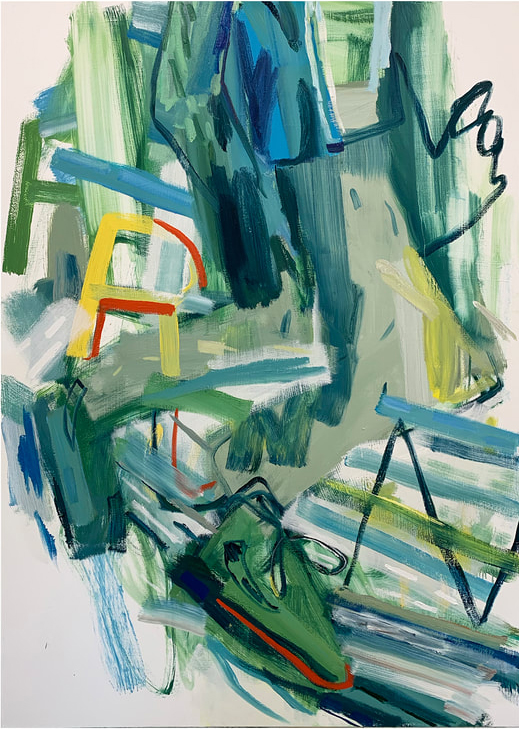
Adam Novak’s two oil paintings, Run1 and Run2 feature the word ‘RUN’ from the title, atop and amongst very loosely suggested bodies that move through the picture plane. The simplicity of the content is complicated by the elusive approach to word and form, while the energetic painting techniques brings excitement to the eye. Jean Rim offers two multi-media works that utilize a variety of techniques including collage and assemblage. I am particularly drawn to August (2021), for its obsessive and meditative approach to the content, while the overall composition, which is in a tondo format, keeps the eye moving and one’s interest piqued.
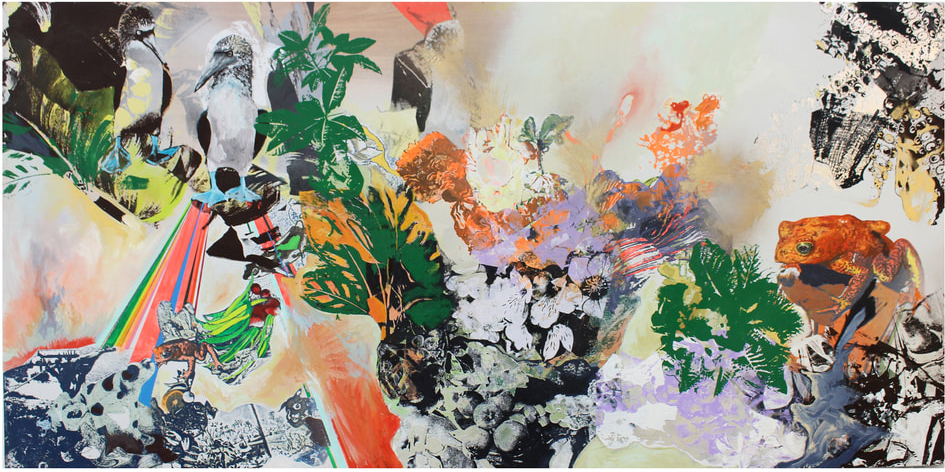
Corrie Slawson has strong concerns for the state of the world. Using oil and mixed media on plywood, Slawson shows the influence of James Rosenquist, and his signature Pop Art panoramas. Conversely, while Rosenquist focused primarily on popular culture and advertising, Slawson broadens the range adding extinct animals and the sadness that ensues, as with Blue Footed Boobies are endangered; Harlequin Toad, now extinct. Rabbit is distraught (2020). Karla Wozniak’s paintings are more in the Paul Klee and Adolph Gottlieb realm. Patterns, colors, textures and shapes all compete for our attention, as light brings hope in Fire, Shapes, Silverware (2021), and night brings dreams, as in Egg + Shoe (2021).
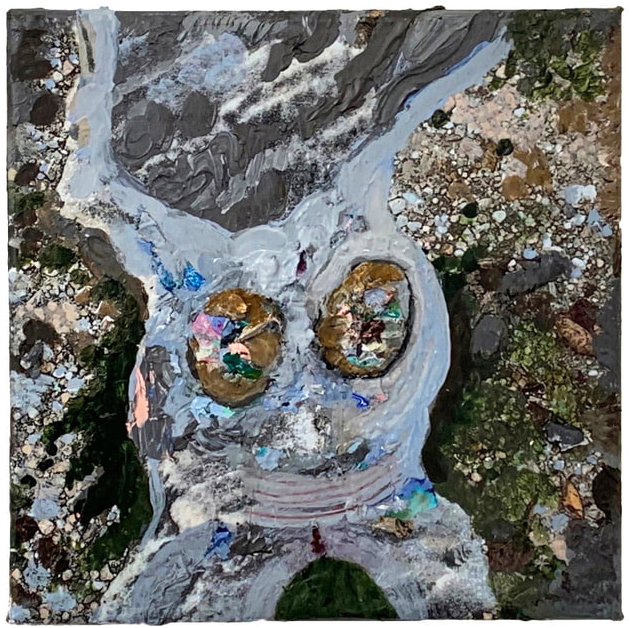
Holly Wong’s beautiful mixed media works immediately brought to mind Frank Stella’s prints from the early 1990’s that were inspired by the cigar smoke rings he blew, captured, computerized, then turned into 3D renderings. In both instances, with Wong and Stella’s compositions, there is this seemingly endless level of movement and gesture that is clearly amplified by attention-grabbing color and graceful line. Etty Yaniv’s two painterly canvases also have indications of organic forms, only in this instance, the mixes of media and the turbulent techniques are much more mesmerizingly tactile and demanding of our attention. Utilizing a number of curious materials, including the application of bits of plastic, we are witness to a wild ride through the spiritual essence of the natural, as opposed to the literal representations of one’s first impressions.
